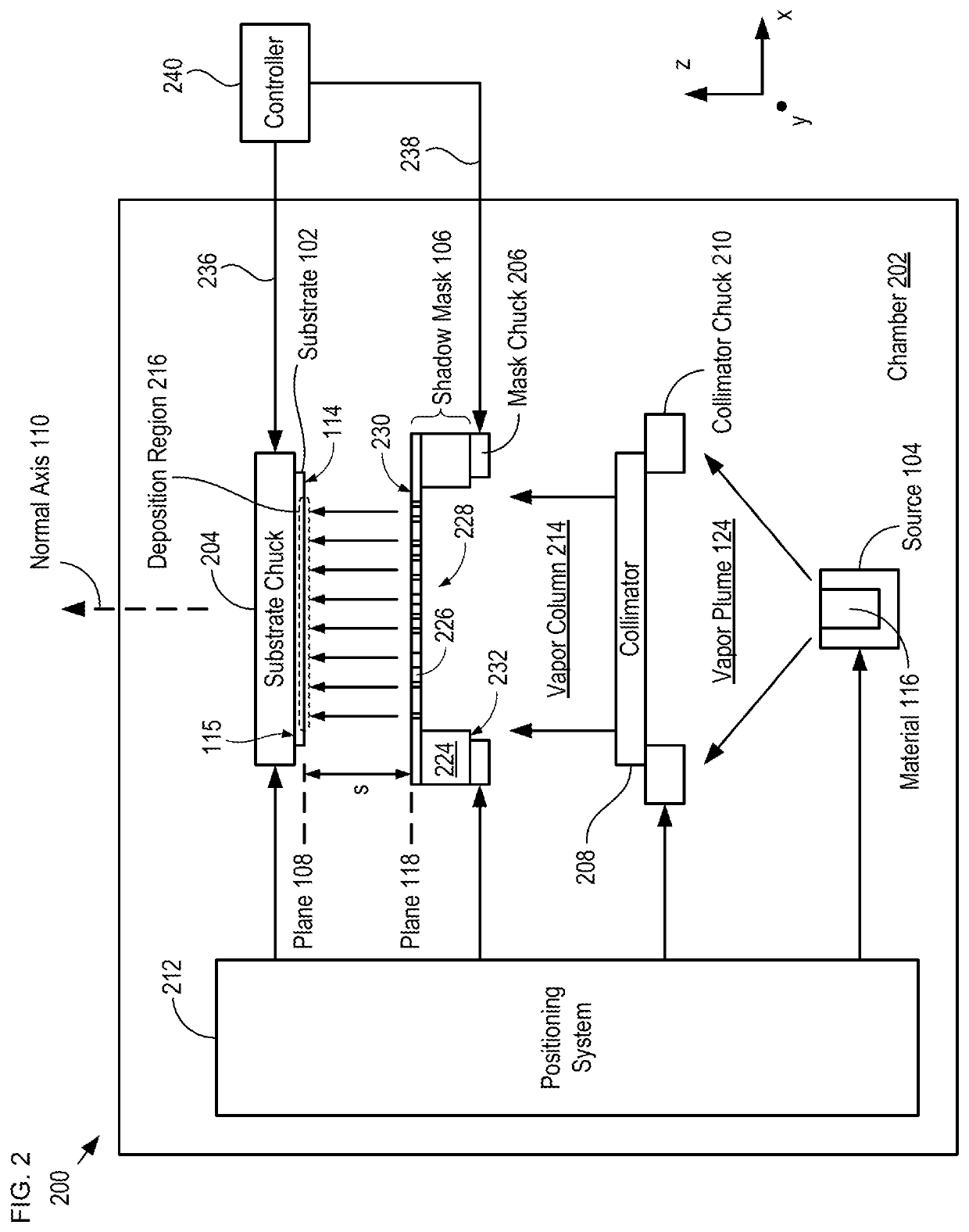High-precision shadow-mask-deposition system and method therefor
a shadow-mask and high-precision technology, applied in the field of evaporation-based thin-film deposition, can solve the problems of reducing the feature resolution that can be obtained by conventional shadow-mask deposition, increasing “fauna” and many materials cannot be subjected to photolithographic chemicals without damag
- Summary
- Abstract
- Description
- Claims
- Application Information
AI Technical Summary
Benefits of technology
Problems solved by technology
Method used
Image
Examples
Embodiment Construction
[0040]FIG. 1 depicts a schematic drawing of a cross-section of the salient features of a direct-patterning deposition system in accordance with the prior art. System 100 is a conventional evaporation system that deposits a desired pattern of material on a substrate by evaporating the material through a shadow mask positioned in front of the substrate. System 100 includes source 104 and shadow mask 106, which are arranged within a low-pressure vacuum chamber (not shown).
[0041]Substrate 102 is a glass substrate suitable for the formation of active-matrix organic-light-emitting-diode (AMOLED) displays. Substrate 102 includes surface 114, which defines plane 108 and normal axis 110. Normal axis 110 is orthogonal to plane 108. Surface 114 includes a plurality of deposition sites, G, for receiving material that emits green light, a plurality of deposition sites, B, for receiving material that emits blue light, and a plurality of deposition sites, R, for receiving material that emits red l...
PUM
| Property | Measurement | Unit |
|---|---|---|
| thickness | aaaaa | aaaaa |
| thickness | aaaaa | aaaaa |
| distance | aaaaa | aaaaa |
Abstract
Description
Claims
Application Information
 Login to View More
Login to View More - R&D
- Intellectual Property
- Life Sciences
- Materials
- Tech Scout
- Unparalleled Data Quality
- Higher Quality Content
- 60% Fewer Hallucinations
Browse by: Latest US Patents, China's latest patents, Technical Efficacy Thesaurus, Application Domain, Technology Topic, Popular Technical Reports.
© 2025 PatSnap. All rights reserved.Legal|Privacy policy|Modern Slavery Act Transparency Statement|Sitemap|About US| Contact US: help@patsnap.com



